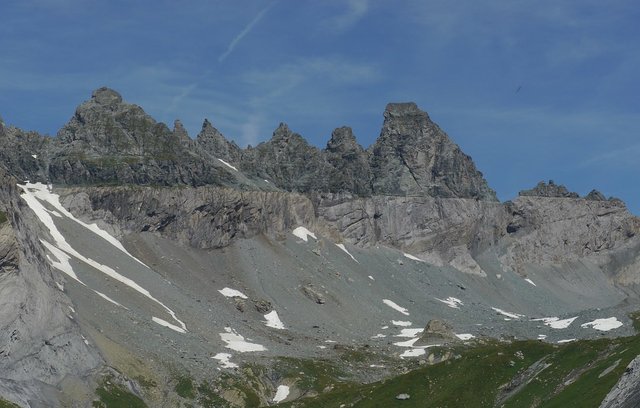
Chapter VI of Immanuel Velikovsky’s Earth in Upheaval is called Mountains and Rifts. In the six sections of this chapter, Velikovsky examines the evidence for recent and catastrophic mountain building. Could it be that some of the world’s tallest mountain ranges, which geologists claim have grown to their current heights slowly over tens of millions of years, actually rose rapidly during the age of man? The first section, Mountain Thrusts in the Alps and Elsewhere, looks primarily at the European Alps.
The Rockies
Velikovsky begins, however, in the western United States, where relatively young strata are sometimes overlain by much older rocks, implying that the latter have undergone significant lateral movement in more recent times. In an earlier chapter, Velikovsky cited Our Mobile Earth by the Canadian geologist Reginald Aldworth Daly in connection with the Appalachian Mountains and North America’s Atlantic Coastal Plain. This work is now quoted in relation to Chief Mountain, Montana:
Chief Mountain, Montana, is a fine pile, standing several thousand feet above the Great Plains (Figure 148). The mountain is a remnant of a thick, greatly eroded, dissected slice of old geosynclinal sediments. That slice had been thrust bodily upon the much younger strata of the Great Plains, and then driven over them, eastward, for a distance of at least eight miles [13 km]. Indeed, the thrust may have been several times eight miles. (Daly 228-229)
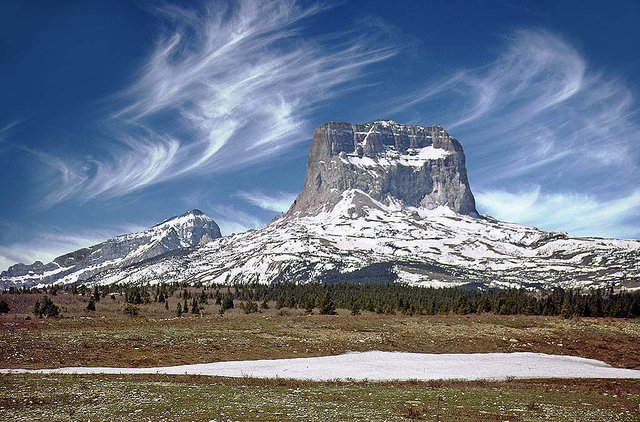
Velikovsky, however, neglects to quote Daly’s following remarks, which do nothing to suggest that the motion of the older strata was either catastrophic or recent:
In the background of the photograph, we see the very ancient, graytinted rocks of the mountain. The surface along which they were shoved is near the visible base of these old rocks. I have seen that surface. It is polished almost like a mirror; the polishing was the effect of friction of the slowly moving slice of the earth’s crust as it was driven over the much younger shaly rocks of the Plains. (Daly 229-231)
Chief Mountain is one of the Rocky Mountains’ most striking peaks. This enormous block of limestone and dolomite is part of the Lewis Overthrust, a huge wedge of rock that has been driven about 80 km eastwards over the younger sedimentary strata of the Great Plains.
To geologists, Chief Mountain is arguably the world’s finest example of a klippe (German for cliff). A klippe is an outlying remnant, isolated by erosion, of a much larger sheet of thrusted rocks. In other words, fault movement and erosion have left the rocks notably out of place. (Montana Bureau of Mines and Geology)
It is curious that Velikovsky chose to open this chapter by describing this particular geological feature. There is nothing in the geology of Chief Mountain or the Lewis Overthrust to support Velikovsky’s thesis that rapid and catastrophic mountain building occurred within the last few thousand years. The rocks that comprise the Lewis Overthrust are believed to be of Pre-Cambrian origin—about 1.4 billion years old. The younger sedimentary strata were laid down over subsequent aeons. Around 170 Mya, tectonic movements in the west created the Lewis Overthrust, and for tens of millions of years the overthrust crept slowly eastwards to its present location. All of this is in accordance with the Doctrine of Uniformitarianism.

The Alps
Like Daly, Velikovsky next turns his attention to Europe:
Specially impressive is the overthrusting or rafting together of the strata composing the European Alps ... During the building of the Alps gigantic slabs of rock, thousands of feet thick, hundreds of miles long, and tens of miles wide, were thrust up and then over, relatively to the rocks beneath. The direction of the relative overthrusting movement was from Africa toward the main mass of Europe on the north. The visible rocks of the northern Alps of Switzerland have thus been shoved northward distances of the order of 100 miles. In a sense the Alps used to be on the present site of northern Italy. (Daly 231-235)
To this quotation, Velikovsky adds:
Mont Blanc was moved from its place and the Matterhorn was overturned. (Velikovsky 66)
These two nuggets of information are not cited. They were not taken from Daly. I believe Velikovsky found the reference to the Matterhorn in George Gamow’s Biography of the Earth, a book that is referred to in a footnote on this page. In describing the structure of mountains, Gamow outlines a model of what he calls Upside-Down Mountains, according to which mountains “float” in the crust of the Earth like icebergs in the ocean:

According to the present views, the mountains on the surface of the Earth represent formations similar to the ice hills produced on the polar ice fields by the compression of the ice. Every arctic explorer knows that when blocks of ice, broken by compression, are piled on top of one another, most of the ice sinks below the water in order to keep the rest afloat ... Thus, while a polar bear will see a high hill rising above the surface of the ice field, a seal swimming under it will notice an even larger bulge protruding into the water. Similarly, to each mountain rising above the surface of the Earth there corresponds, so to speak, a “negative mountain” formed by the granite masses protruding into the underlying plastic layer of basalt. ... The elasticity of the crust also prevents the “negative mountain” from being something like a mirror image of the corresponding elevation above the surface; an imaginary mountain climber making his way through the masses of plastic basalt deep under the Alps will look in vain for anything resembling the upside-down Jungfrau or Matterhorn. Probably all that he will find there is an extensive smooth bulge of granite protruding several kilometres downward into the basaltic layer. (Gamow 105-106)
Velikovsky, perhaps, has simply misunderstood what Gamow was saying and imagined that at some time in the past the Matterhorn was actually flipped upside-down.
Alternatively, Velikovsky may have taken this idea from an article George McCready Price wrote in 1922, which is cited on the next page:
But we must pass on to consider those examples which may not untruthfully be characterized in a brief way as deceptive conformities upside down. True, they do not pass under any such name in the literature of the science. In common geological parlance they are called “thrusts” or “thrust faults.” Some years ago, when such examples were first discovered, they were called “overthrust folds,” this name embalming in it the theory designed to explain the phenomena ... Such noted peaks as the Matterhorn, the Dent Blanche, and the Weisshorn are parts of immense masses which are now said to have been pushed bodily over on top of the underlying strata, because the latter contain fossils classed as much younger. (McCready Price 1922:602 ... 606)
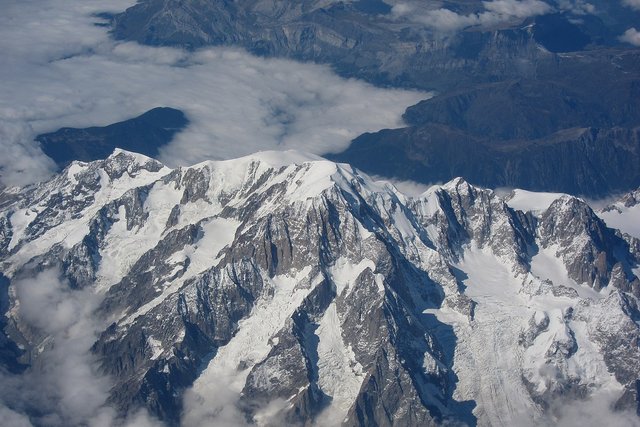
Mont Blanc is not mentioned by either Daly or Gamow. However, on page 233 of his text, Daly includes a diagram taken from Structural Geology by Charles Kenneth Leith, head of the geology department at the University of Wisconsin. On page 203 of the revised edition of Structural Geology, Leith writes:
Glaciers may cause movement by their loading effect, by the thrust they exert, or by sapping or oversteepening the rocks at their source, causing cirques. From this cause in 1920, about 5,000,000 cubic yards on Mt. Blanc moved 8 kilometers. (Leith 203)
In another uncited passage, Velikovsky describes the Glarus Overthrust, which is similar in its geology to the Lewis Overthrust:
Those portions of the Alps that surround the valley of the Linth, in the canton of Glarus in Switzerland, have lower parts of Tertiary formations or of the age of mammals; their upper parts are Permian (preceding the age of reptiles) and Jurassic (of the age of reptiles). This impels to one of two conclusions: either the division of rocks into sequences based on the fossils they contain is fallacious, or the old mountains were moved bodily and set on the shoulders of more recent formations. The latter conclusion is chosen. (Velikovsky 66)
What is Velikovsky’s source for this information? It comes from George McCready Price’s Common-Sense Geology, which Velikovsky quotes on the next page:
This is a famous locality geologically, the valley of the Linth, canton of Glarus, Switzerland. The lower parts of these mountains are Tertiary, the upper portions are Permian and Jurassic, though the contact line between them is much concealed by talus. (McCready Price 1946:15)
It is easy to see why Velikovsky believed that the mechanism that accomplished these geological feats must have been catastrophic. Surely only a truly catastrophic event could overturn an entire mountain chain:
... and if De Saussure’s notion of the sea sweeping over the Alps appeared fantastic, the idea of mountains traveling considerable distances must sound even more fantastic, unless we know of a physical cause that could have brought it about. But even the very cause of mountain building itself is obscure. (Velikovsky 66)
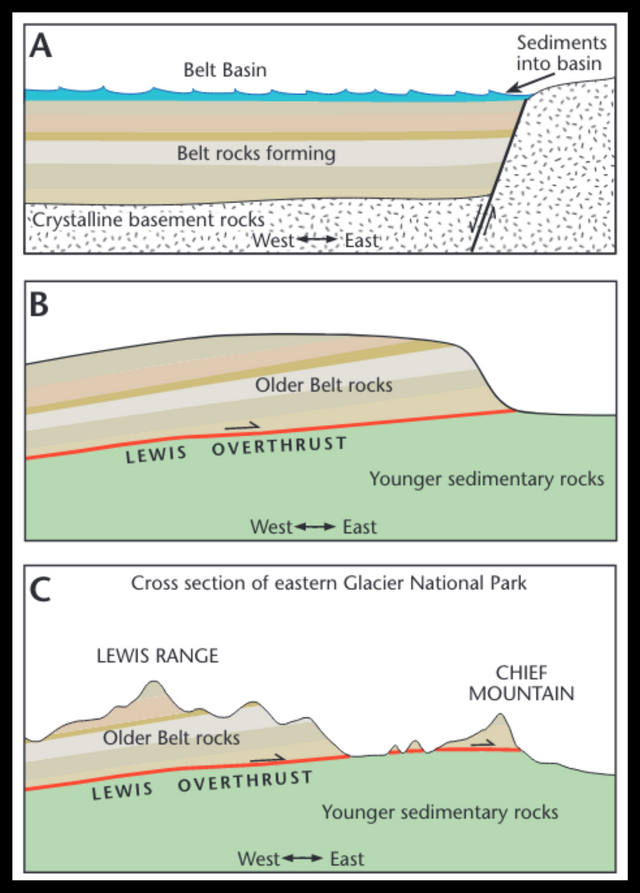
Orogeny
In 1955, when Velikovsky wrote Earth in Upheaval, the geological mechanism underlying orogeny, or mountain building, was still a mystery. One popular theory modelled mountain ranges as wrinkles in the Earth’s crust:
Although the cooling of the Earth has scarcely commenced as far as the entire body of the planet is concerned, it has played, and is playing an important role in the development of the Earth’s surface features. In fact, since the outer crust of the Earth has been rigid from the very first moment of its formation, the steady cooling and subsequent contraction of the underlying plastic layers is steadily making the crust too large to fit the shrinking interior, and it must wrinkle in the very same way as the skin of an apple does in the process of baking. It is hardly necessary to tell the reader that the various wrinkles and folds formed on the surface of our planet as the result of cooling are, of course, the great mountain chains contributing so much to the beauty of the landscape. (Gamow 99-100)
Against this hypothesis Velikovsky cites the geologist Kirtley Fletcher Mather of Harvard University, who reviewed Gamow’s popular book in Science magazine. Velikovsky refers to him incorrectly as F. K. Mather:
The problem of mountain-making is a vexing one: Many of them [mountains] are composed of tangentially compressed and overthrust rocks that indicate scores of miles of circumferential shortening in the Earth’s crust. Radial shrinkage is woefully inadequate to cause the observed amount of horizontal compression. Therein lies the real perplexity of the problem of mountain-making. Geologists have not yet found a satisfactory escape from this dilemma. (Mather 72)
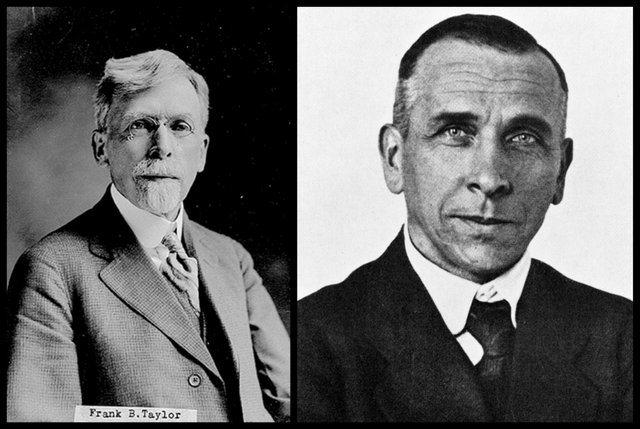
Although the processes by which mountain chains were created were still unknown in 1955, there was a considerable amount of speculation and theorizing in this field. In fact, the American geologist Frank Bursley Taylor and the German geologist Alfred Lothar Wegener had already laid the groundwork for a true science of mountain building, when they independently proposed the notion of continental drift in 1908 and 1912 respectively. It was not until the 1960s, however, that the discoveries of seafloor spreading and subduction zones finally led to the establishment of the science of plate tectonics. This theory has now become a cornerstone of modern geology, and in the eyes of mainstream scientists it has successfully explained how mountain ranges come to be, growing from tiny beginnings into towering peaks over the course of tens of millions of years.
Tectonic movements similar to those that create mountains have been invoked to explain the subsequent lateral movement of mountain ranges, which creates overthrusts. This answers Velikovsky’s query:
“ ... All of the Glacier National Park in Montana and all the Rocky Mountain area up to the Yellowhead Pass in Alberta” moved for many miles. [Footnote 5: George McCready Price, Common-sense Geology, p. 120. Idem, “The Fossils as Age-makers in Geology,” Princeton Theological Review, Vol. XX, No. 4, October 1922.] The mountains of western Scotland shifted from their places. The entire length of the Norwegian mountains showed a similar overthrust. What could have caused these mountains to travel across valley and uphill with their masses of granite weighing billions of tons? No force acting from inside the earth, pulling inward or pushing outward, could have created these overthrusts. Only twisting could have produced them. It could hardly have occurred if the rotation and revolution of our planet had never been disturbed. (Velikovsky 67)
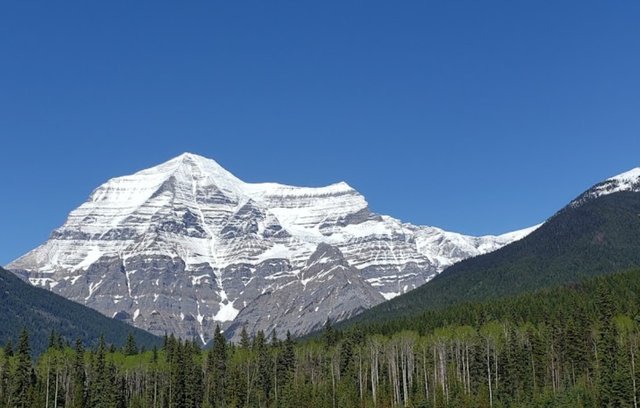
McCready Price’s article in the Princeton Theological Review is called “The Fossils as Age-markers in Geology”—markers, not makers as Velikovsky has it.
Alpine Caverns
Velikovsky concludes this section by reviewing the evidence for human habitation of Alpine peaks during the Pleistocene Ice Age:
In the Alps, caverns with human artifacts of stone and bone dating from the Pleistocene (Ice Age) have been found at remarkably high altitudes. During the Ice Age the slopes and valleys of the Alps, more than other parts of the continent, must have been covered by glaciers; today in central Europe there are great glaciers only in the Alps. The presence of men at high altitudes during the Pleistocene or Paleolithic (rude stone) Age seems baffling. (Velikovsky 67)
His source for this information is the American anthropologist George Grant MacCurdy. In his book Human Origins (1924), MacCurdy hypothesized that modern humans evolved in Europe. Velikovsky writes:
The cavern of Wildkirchli, near the top of Ebenalp, is 4900 feet [1500 m] above sea level. It was occupied by man sometime during the Pleistocene. “Even more remarkable, in respect to altitude, is the cavern of Drachenloch at a height of 2445 meters [8028 feet],” near the top of Drachenberg, south of Ragaz. This is a steep, snow-covered massif. “Both of these stations are in the very heart of the Alpine field of glaciation.” [Footnote: G. G. MacCurdy, Human Origins (1924), I, 77.] (Velikovsky 67)
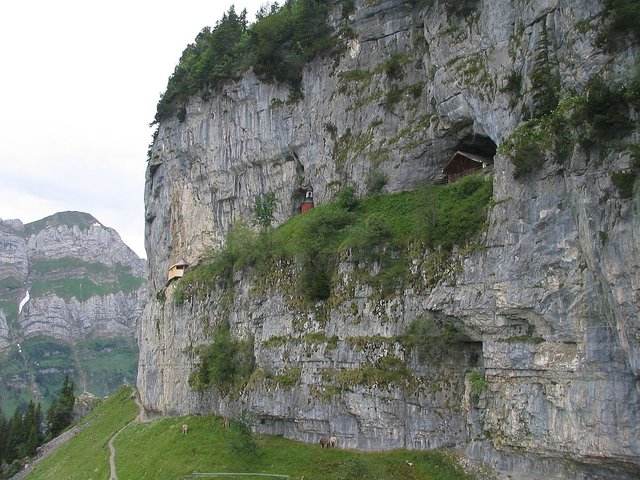
But this misrepresents what MacCurdy actually says:
Europe was inhabited by man throughout a long series of epochs, during the Pleistocene ... During the Pleistocene there were four glacial epochs alternating with interglacial epochs ...
Switzerland has furnished evidence of interglacial occupation of three caverns by Paleolithic man—Cotencher (Neuchatel), Wildkirchli (Appenzell), and Drachenloch (St. Gallen). All three yielded remains of ibex, chamois, and cave bear, the latter averaging from 95 to 99.5 per cent of the entire faunal remains; also a primitive atypic Mousterian industry of stone and bone.
The cavern of Wildkirchli (Fig. 17) is situated near the top of the Ebenalp at an altitude of 1,477 to 1,500 meters (4,849 to 4,925 feet), some 200 meters (656.6 feet) higher than the maximum level attained by the local Würm glaciers descending from the Säntis range. The Ebenalp may be regarded, therefore, as a nunatak and not habitable during a glacial epoch. Even more remarkable, in respect to altitude, is the cavern of Drachenloch (Figs. 18 and 19) at a height of 2,445 meters (8,028 feet), near the top of Drachenberg, southerly from Ragatz. Both of these stations are in the very heart of the Alpine field of glaciation. The nature of the animal and industrial remains excludes all possibility of their being post-Würmian; they must, therefore, be referred to the Riss-Würm Interglacial Epoch. (MacCurdy 76-77)

It is clear from this that MacCurdy believed that the human occupation of these high Alpine caverns took place during interglacial epochs, when the climate was as warm as, if not warmer than, it is today. There is nothing remarkable about the presence of humans at this high altitudes during an interglacial epoch. MacCurdy nowhere expresses any astonishment at these finds. To him, they are simply proof that humans were living in Europe during the Pleistocene Epoch:
It is evident that the last word has not yet been said on the subject of comparative chronology. But there is no longer any reason to doubt that man lived in Europe at least as long ago as the Mindel-Riss Interglacial Epoch, where practically all authorities have agreed in placing Homo heidelbergensis. The character of the dentition of the Heidelberg lower jaw points unmistakably to a tool user, even to one whose ancestors had for ages been tool users. It can safely be assumed, therefore, that man antedates the Mindel-Riss Epoch. (MacCurdy 83)
In his next paragraph, Velikovsky concedes that the occupation of these high Alpine caverns took place during an interglacial epoch, but he still sees this as an inexplicable mystery:
A continental ice sheet thousands of feet thick filled the entire valley between the Alps and the Jura, where now Lake Geneva lies, to the height of the erratic boulders torn from the Alps and placed on the Jura Mountains. In the same geological epoch, between two advances of the ice cover, during an interglacial intermission, human beings must have occupied caverns 8000 feet [2400 m] above sea level. No satisfactory explanation for such location of Stone Age man has ever been offered. (Velikovsky 67)
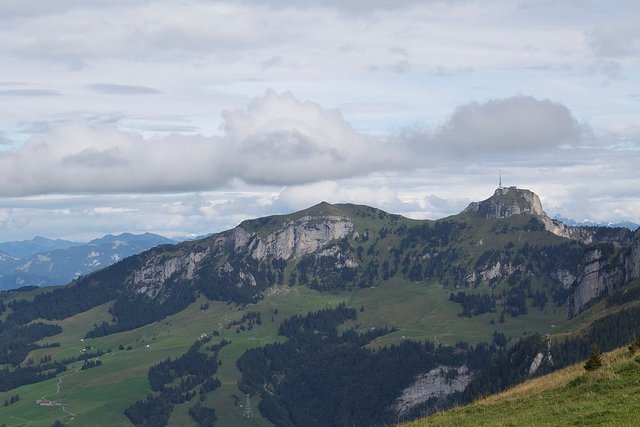
Velikovsky finally states the theme of this chapter:
Could it be that the mountains rose as late as in the age of man and carried up with them the caverns of early man? In recent years evidence has grown rapidly to show, in contrast to previous opinions, that the Alps and other mountains rose and attained their present heights, and also traveled long distances, in the age of man. (Velikovsky 68)
In support of this, he gives us a citation from a mainstream geologist that actually seems to assert this extraordinary hypothesis:
It has long been known that at present there are more extensive mountains and much higher general continental altitudes than have existed throughout the greater part of clearly recorded geologic time. But only recently has it become apparent that the uplifts and mountain-making movements that created the present high lands are largely of post-Miocene date, and that mountain uplifts amounting to many thousands of feet have occurred within the Pleistocene epoch itself. The Cordilleran mountain system in both North and South America, the Alps-Caucasus-Central Asian system, and many others have attained the greater part of their present height during the late Cenozoic. But more significantly for general glaciation the mountains of Scandinavia, Greenland, and Labrador, which are believed to have given origin to some of the largest of the ice sheets, are now believed to have reached their present heights in very late Cenozoic time. (Flint 8-9)

The American geologist Richard Foster Flint was first cited by Velikovsky in The Erratic Boulders in Chapter 2. He was also quoted in Whales in the Mountains in Chapter 4, and in The Norfolk Forest-Bed and Agate Spring Quarry in Chapter 5. Once again, it is Flint’s Glacial Geology and the Pleistocene Epoch that Velikovsky cites.
Flint’s opinion is certainly at odds with what is currently taught to students of geology today. The Miocene Epoch ended about 5 Mya, which leaves only a short period of geological time for the creation of the Alps, the Himalayas, and the American Cordillera. Today, the orogenies that created these mountain ranges are believed to have begun during the late Mesozoic Era—about 80-60 Mya.
But Velikovsky believes that even Flint’s opinion is too conservative:
The revision of the concepts is not always radical enough. Not only in the age of man, but in the age of historical man, mountains were thrust up, valleys were torn out, lakes were dragged uphill and emptied. Helmut Gams and Rolf Nordhagen brought together very extensive material concerning the Bavarian Alps and the Tyrol, or Eastern Alps. We shall deal with this material in Chapter XI, “Klimasturz.” (Velikovsky 68)

Velikovsky concludes this section with a brief quotation from the geological engineer Bailey Willis:
“The great mountain chains challenge credulity by their extreme youth,” wrote the explorer Bailey Willis about Asian mountains. (Velikovsky 68)
Velikovsky cites this as Researches in Asia, II, 24. Volume 2 of the Carnegie Institution of Washington’s Researches in China bears the title “Systematic Geology” and was written by Bailey Willis. The above quotation is indeed on page 24 of this volume:
Diastrophism is a phenomenon which finds expression in the oldest rocks as well as in the youngest mountains of all continents, and of this general fact Asia is the most striking illustration which the earth presents. Large areas exhibit rocks which have been intensely deformed and are among the most ancient known; and the greatest mountain chains challenge credulity by the evidence of their extreme youth. The earlier diastrophic movements escape us in the mists of unrecorded ages of earth-history; we take up the observation only where the facts become partly intelligible; but from that remote time to the present we find a connected series of events. (Bailey 24)
But how young does Bailey mean? To a geologist, a mountain chain 30 million years old might be considered young. As it happens, Willis too believed that significant mountain building has taken place since the Miocene Epoch:
The evidence of stratigraphy north of the range agrees with that of the Siwaliks of the southern foothills, and there is every reason to accept Oldham’s view that much of the elevation of the Himalayas has occurred since the Miocene epoch [Manual of Geology of India, second edition, 1893, p. 479]. In view of the evidence that other mountain systems of Asia have grown to great heights during the Pleistocene it may be questioned whether the Himalayas reached their present altitude during the initial movements of folding; it is even probable that they have suffered one partial epoch of erosion to advanced maturity and have since been warped up, as have the Apennines and Karpathians; but they in any case represent the latest effects of the compressive force which has welded Asia into a continent. (Willis 96)

In the next two sections of this chapter, Velikovsky will take a closer look at the Himalayas and the Siwalik Hills.
Orogeny and Denudation
It is a cornerstone of the Doctrine of Uniformity that the forces of erosion and weathering to which mountains are subjected on a daily basis are the very forces that gradually, over tens of millions of years, wear away even the tallest mountain ranges until they are completely eradicated from the landscape.
This prompts the question: if mountains that are currently being pushed up at a painstakingly slow pace by the forces of plate tectonics are also subject to continuous erosion and weathering, how do they ever grow to be thousands of metres tall? Would they not be denuded just as quickly—or, rather, just as slowly—as they are being created?
I suppose the answer the Uniformitarians give is that so long as there is even the slightest imbalance in these two rates—the rate of growth being ever so slightly greater than the rate of denudation—then even the mightiest of mountain ranges will eventually be uplifted to their present height.
Conclusion
All things considered, this is one of the weaker sections in Earth in Upheaval. Little of the evidence presented here contradicts the Doctrine of Uniformity or leads one to suspect that catastrophic earth movements have occurred within the last few thousand years. The mystery of orogeny, or mountain building, has been solved to the satisfaction of most Uniformitarian scientists. Plate tectonics can be observed in action in real time. The slow growth of mountains has even been measured. The opposing opinions of Willis and Flint are stated but no evidence has yet been adduced in support of these opinions.

Velikovsky will have to do better than this if he wishes to convince anyone that sudden and catastrophic mountain building is a real phenomenon.
And that’s a good place to stop.
References
- Reginald Aldworth Daly, Our Mobile Earth, Charles Scribner’s Sons, New York (1926)
- Richard Foster Flint, Glacial Geology and the Pleistocene Epoch, John Wiley And Sons, Inc, New York (1947)
- George Gamow, Biography of the Earth: Its Past, Present and Future, Pelican Mentor Books, The New American Library, New York (1948)
- Charles Kenneth Leith, Structural Geology, Revised Edition, Henry Holt and Company, New York (1923)
- George Grant MacCurdy, Human Origins: A Manual of Prehistory, Volume 1, D Appleton and Company, New York (1924)
- Kirtley Fletcher Mather, Biography of the Earth. By George Gamow, Science, Volume 95, Number 2455, Pages 71-72, American Association for the Advancement of Science, New York (1942)
- George McCready Price, The Fossils as Age-Markers, Princeton Theological Review, Volume 20, Issue 4, Pages 585-615, Princeton University Press, Princeton, New Jersey (1922)
- George McCready Price, Common-Sense Geology: A Simplified Study for the General Reader, Pacific Press Publishing Association, Nampa, Idaho (1946)
- Immanuel Velikovsky, Earth in Upheaval, Pocket Books, Simon & Schuster, New York (1955, 1977)
- Bailey Willis, Research in China, Volume 2, Systematic Geology, The Carnegie Institution of Washington, Washington, DC (1907)
Image Credits
- The Glarus Overthrust, Switzerland: © Christian Heine (photographer), Creative Commons License
- Chief Mountain, Montana: © Rod Jones, Creative Commons License
- The Southeastern Face of Chief Mountain: © Mike Mitchell, Fair Use
- The Eggshell and Iceberg Theories of Mountain Structure: © George Gamow, Biography of the Earth, Figure 33, Page 105, Pelican Mentor Books, The New American Library, New York (1948), Fair Use
- Mont Blanc: © Olivier Cleynan (photographer), Creative Commons License
- The Formation of the Lewis Overthrust: © Montana Bureau of Mines and Geology, Fair Use
- Frank Bursley Taylor: Origin and Copyright Unknown, Fair Use
- Alfred Wegener: Marburg Picture Index, German Documentation Center for Art History, Marburg, Copyright Unknown, Fair Use
- Mount Robson, Yellowhead Pass (Alberta, Canada): © Toffy Concepcion (photographer), Fair Use
- Wildkirchli, Switzerland: Diego Hättenschwiler (photographer), Public Domain
- Drachenloch, Switzerland: © Lulu lu (photographer), Fair Use
- The Ebenalp: © Patrick Nouhailler (photographer), Creative Commons License
- Richard Foster Flint: Copyright Unknown, Fair Use
- Bailey Willis: © The Granger Collection Ltd, Granger Historical Picture Archive, Fair Use
- The Himalayas: © Michel Royon / Wikimedia Commons, Creative Commons License
- Orogeny and Denudation: © Mountain Building Group, Freie Universität Berlin, Fair Use
